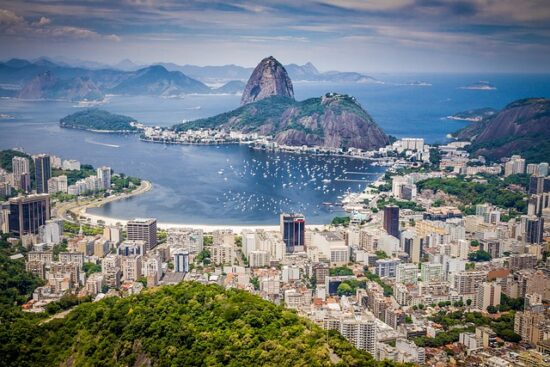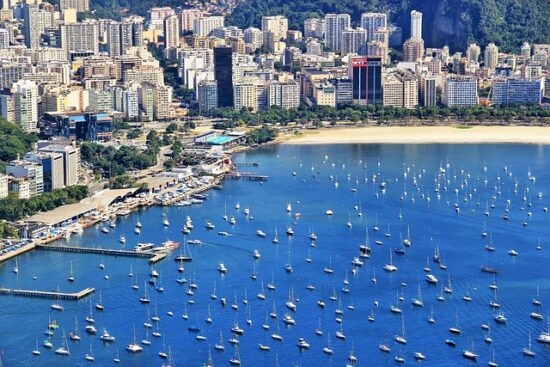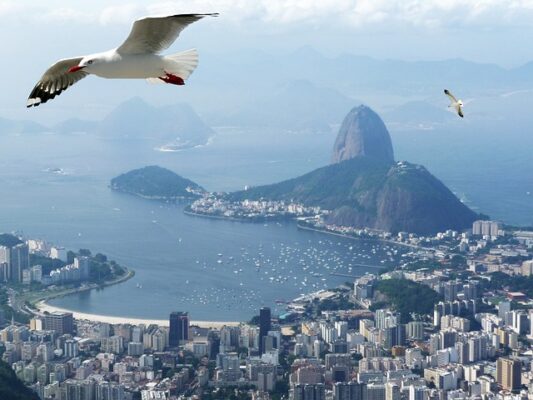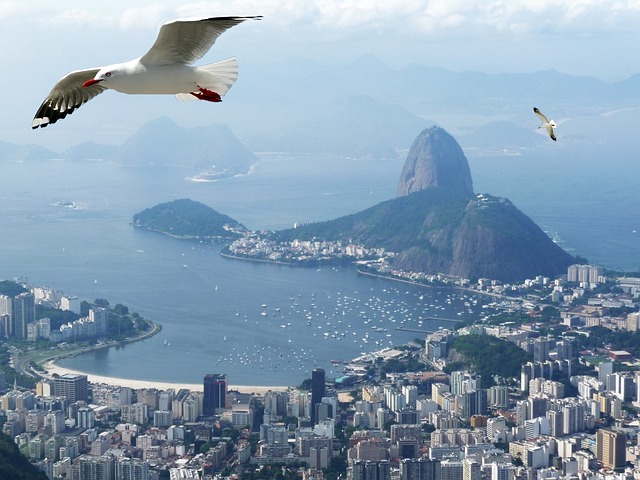Simply known as Rio, it is the second most populous city of Brazil. Rio de Janeiro is also the name of a Brazilian state and its capital city is of the same name. It is a very important city of Brazil where major companies of telecommunications, oil and mining have their central offices located. It is a popular attraction for tourists all around the world primarily due to its cultural activities like carnival of Brazil and Brazilian music like samba and bossa nova. Its beaches are also very popular like Leblon, Barra da Tijuca and Copacabana. Rio de Janeiro will be the first city of Portuguese-speaking people of South America that will host 2016 Summer Olympics as well as 2016 Summer Paralympics. In Southern Hemisphere, it will be the third city where these events are going to be held. Let’s explore more in Rio de Janeiro facts for kids!
Highest Peak: Pedra Branca Peak (1,024 metres)
Literacy Rate: 95 percent
Official Song: Cidade Maravilhosa (Marvelous City)
Fascinating Rio de Janeiro Facts for Kids | Rio de Janeiro History
- Before the arrival of British, this region was home to seven indigenous groups of people. They spoke 20 languages.
- The Portuguese first established this city on March 1, 1565 and it served as the seat in the Portuguese Empire.
- The State of Brazil was Portuguese Empire’s state and Rio de Janeiro was turned into the capital city of this state in 1763.
- Until 1889, this city was served as the capital city of the Empire of Brazil, the 19th century Empire consisting of present-day Brazil and Uruguay.
- Rio de Janeiro was the capital of republican Brazil until 1960. After this, Brasília became its capital.
 The first match of soccer in Brazil was played in September, 1894. At the inauguration of Bangu Textile Factory on 8 March, 1893, labor from Bangu started arriving in Bangu (situated in the neighborhood to West Zone of Rio de Janeiro) and thus set stone for the first football match.
The first match of soccer in Brazil was played in September, 1894. At the inauguration of Bangu Textile Factory on 8 March, 1893, labor from Bangu started arriving in Bangu (situated in the neighborhood to West Zone of Rio de Janeiro) and thus set stone for the first football match.- The first football match of Brazil was played by British labors and each side had five players. The Charles Miller’s game was played 6 months after this match.
- Before this match, nobody among the locals knew anything about football. Therefore, a Scottish worker (who was working in the factory) named Thomas Donohoe wrote to her wife Elizabeth to bring him a football along with his kids since there was no football available in the shops.
 All about Rio de Janeiro
All about Rio de Janeiro
- It is located near the Tropic of Capricon and toward the western side of the Atlantic Coast of Brazil.
- It has a population of 6 million.
- The people of Rio de Janeiro are called cariocas.
- The financial hub as well as the historic centre of Rio de Janeiro is called Downtown or Centro.
- The South Zone of Rio de Janeiro is the wealthiest part of this city.
- The most expensive real estate of South America is located in this city’s neighborhood of Leblon.
- The gap between the rich and the poor is wide in this city. The slums of this country living in urban areas are called favelas. Among favelas, 95 percent are poor while this ratio is 40 percent among the masses.
- The percentage-wise distribution of ethnic groups in Rio is White (51.2%), Pardo (36.5%), Black (11.5%), Asian (0.7%) and Amerinidians (0.1%).
- More than 50 percent of the area of Rio de Janeiro is covered by West Zone.
- This is a historic place due to ancient ‘Royal Road of Santa Cruz’ which passes through this region
- The Pedra Branca State Park of the West Zone consists of 17 neighborhoods and waterfalls as well as other ancient sites. It is by far the world’s largest urban state park.
Cool Rio de Janeiro Facts for Kids
- It is the only city of South America that has received most awards to be the ‘best destination’ by World Travel Awards.
- In terms of tourists, it is ranked top of the list of South American cities. Each year, it greets 2.82 million visitors from all over the world.
- It is the only city in the world (located outside Portugal) where largest number of Portuguese-speaking people live.
- It is the only capital of Brazil where highest percentage of spiritists lives (4 – 5%).
- Rio has the highest percentage of Catholics among the outer edges of Brazil.
- In terms of municipal GDP, this city has the second largest GDP in Brazil.
- After São Paulo, Rio de Janeiro ranks second among the most populous cities of Brazil (2010).
- As for research and development purposes, Rio de Janeiro is the second largest city of this country (contributing 17 percent of scientific output in Brazil – 2005).
- In terms of industrial production, Rio is the second most important city of Brazil.
- It stands at the second position among the biggest exporting municipalities of the country (2014). The main exports of Rio are crude petroleum, semi-finished iron and steel products.
- It has the second largest economy of the country.
- It is ranked as the fifth capital of Brazil where high percentage of people does not follow any religion (13.33%).
- It ranks at the sixth position among the largest cities of Americas.
- It is the seventh most inhabited city in the Americas.
- Rio is the 12th most expensive city in the world (2011).
- It is ranked 30th among the largest economies of the world.
- In 2008, Rio de Janeiro ranked 30th in the world among cities that have largest municipal GDP. Its GDP was estimated to be around US$201 billion (R$343 billion).
 More Facts about Rio de Janeiro
More Facts about Rio de Janeiro
- The Tijuca National Park is ranked second among the largest urban forests in the world.
- The CNN declared Ipanema beach of Rio as the best beach in the world which is located in a city.
- The electric tramway in Rio de Janeiro is currently the oldest in South America.
- Rio de Janeiro has cycle paths of 99 miles (160 km).
- Established in 1909, the Theatro Municipal is one of the Latin America’s largest stages. It has a capacity of 1,700 seats.
- Pedro II School of Rio is ranked second among the oldest schools of Brazil.
- Rock in Rio is the name of a musical festival of this city and it is arguably the largest music festival in the world. As per Fling Festival, Rock in Rio is ranked eighth among the best festivals of the world.
- The Biblioteca Nacional do Brasil (which means ‘National Library of Brazil’) in Rio is among one of the world’s largest libraries. It houses over 9 million items. Built in 1810, it is the largest in Latin America.
- The Federal University of Rio de Janeiro is ranked at the fifth position among the universities of Latin America. It ranks second in the country (QS World University Rankings).
- It is home to the statue of Jesus Christ known as Christ the Redeemer. The statue is 30 metres (98 ft) tall and it is located at Corcovado mountain. It is an iconic symbol of this city and is listed among the New Seven Wonders of the World.
- In terms of capacity, the football stadium known as Maracanã Stadium in this city is one of the largest in the world.
- The party at the New Year Eve in the neighborhood of Copacabana is known as Reveillon. In order to witness the wonderful display of fireworks, almost 2 million revelers flock toward this beach.
- The hotel rates in Rio are the most expensive in the country.
- After New York City, the daily charges of five star hotels in Rio de Janeiro are the highest in the world.


Leave a Reply